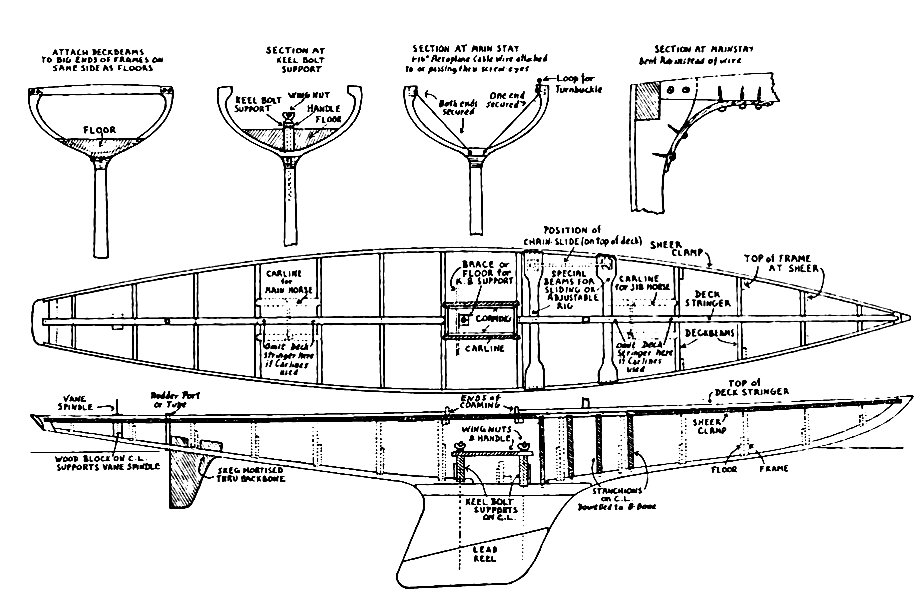Building Planked Models
by Charles Farley, Edited by Earl Boebert
From the Editor’s Foreword:
Charles H. Farley was the first editor of Model Yachting Monthly, a publication that existed from March of 1945 until November of 1949. In 1941, Farley had published a running series in the Model Yachting column of Model Craftsman magazine; in 1945 and 1946 he expanded and republished this material in Model Yachting Monthly under the title “Building Planked Models”. It is this latter body of material that I have drawn upon in assembling this work. I am indebted to Charles Williamson, my fellow Historian of the US Vintage Model Yacht Group, for locating and preserving a complete run of this magazine.
I have attempted to apply as light an editorial hand as possible. The most significant changes have been in the order of presentation; the original work was spread across several individual articles and one long series. I have grouped paragraphs together in a logical sequence and eliminated repetition, and whenever I have felt the need to intrude it has been in the form of footnotes. Otherwise you are reading the words essentially as Farley wrote them.
The techniques described in this work represent the “average” state of practice of model yacht construction in the 1940s and 1950s. Traditionalists were still carving hulls using the laminated or “bread and butter” method, and “high technology” builders such as A.R. Lassel were constructing remarkably light hulls by the “former” method that Farley decries in his introductory words. Nevertheless, the typical hull of the period was built as Farley described.
Purists may wish to construct a boat using the authentic methods of the period; others may wish to take advantage of modern materials and adhesives. Rod Carr, whose fine replica of W.J. Daniel’s Pocahontas graces our cover, has kindly proved an afterword on up-to-date techniques. However a builder chooses to proceed, it is my sincere hope that making a description of these methods available will help others in constructing replicas of these lovely boats.
Table of Contents
Chapter 1: Basics
Parts and Materials: Backbone, Frames, Sheer Clamps, Planking
Chapter 2: Getting Ready
Patterns: Frames, Backbone/Rabbet Line/Bearding Line
The Building Board
Chapter 3: Framing Up
Laying Out
Making and Setting the Frames
Final Framing
Chapter 4: Planking
Introduction
Cutting and Attaching Planks
Chapter 5; Finishing Steps
Interior Parts
Installing Interior Parts
Decking
Finishing Steps
Adjustable Rig
Afterword: Modern Materials
Appendix: Sources of Plans and Materials

